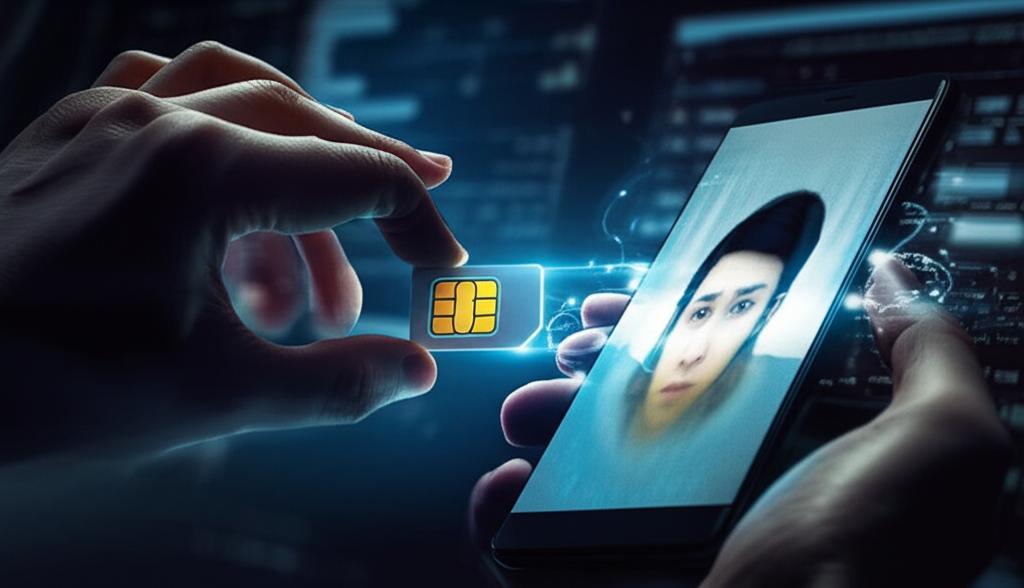Defend Your Digital Life: Unmasking the Peril of SIM Swapping
In an increasingly connected world, our mobile phones serve as the gateway to our digital lives, holding everything from personal contacts and photos to banking apps and email. But what happens when that gateway is compromised without your knowledge? Enter SIM swapping, a sophisticated and alarming form of identity theft that can grant cybercriminals complete access to your online presence. Understanding what SIM swapping is and how to protect yourself is no longer optional – it’s crucial for digital survival.
What Exactly Is SIM Swapping?
SIM swapping, also known as a SIM card exchange fraud or SIM porting scam, is a fraudulent activity where criminals trick your mobile carrier into transferring your phone number to a new SIM card under their control. Essentially, they convince your carrier that they are you, request a new SIM card for your number, and then activate it. Once successful, your old SIM card (in your phone) becomes inactive, and all calls, texts, and data associated with your number are rerouted to the attacker’s device.
The danger here is immense because many online services – including banking, email, social media, and cryptocurrency exchanges – use your phone number for two-factor authentication (2FA) or password recovery. With control over your phone number, attackers can bypass these security measures, reset passwords, and gain unauthorized access to your most sensitive accounts.
How Does SIM Swapping Work?
The process of a SIM swapping attack typically involves several steps:
- Information Gathering (Pretexting): Attackers first gather personal information about their target. This often involves phishing scams, malware, social engineering tactics, or purchasing data from the dark web. They might look for your full name, address, date of birth, social security number, or even specific details about your recent phone activity.
- Contacting the Carrier: Armed with your personal data, the criminal contacts your mobile service provider. They pose as you, claiming their phone was lost, stolen, or that their SIM card is damaged, and request to transfer your number to a new SIM card they possess.
- Social Engineering the Representative: Through a combination of persuasive language, fabricated stories, and the stolen personal information, they attempt to convince the customer service representative that they are the legitimate account holder.
- SIM Transfer and Activation: If successful, the carrier deactivates your existing SIM card and activates the new one provided by the attacker. At this point, your phone loses service, and the attacker gains control of your phone number.
- Account Takeover: With your phone number in hand, the attacker can now initiate password resets on your various online accounts. Since the reset codes are sent via SMS to your number, they receive them directly and can take over accounts like banking, email, social media, and crypto wallets.
The Devastating Impact of a Successful SIM Swap
A successful SIM swapping attack can lead to severe consequences:
- Financial Loss: Attackers can access banking apps, credit card accounts, and cryptocurrency wallets, leading to rapid and significant financial theft.
- Identity Theft: With access to your email and other accounts, criminals can steal your identity, apply for loans or credit in your name, and cause long-term damage to your credit score.
- Loss of Digital Assets: Valuable digital assets, including social media profiles, email archives, and cloud storage, can be lost or exploited.
- Reputational Damage: Attackers might post malicious content or messages from your social media accounts, harming your personal or professional reputation.
- Privacy Invasion: Intimate personal data, photos, and communications can be accessed and exposed.
Vigilance is Key: How to Protect Yourself from SIM Swapping
Preventing SIM swapping requires proactive steps and a heightened awareness of your digital security:
- Set Up a Strong PIN/Password with Your Carrier: Contact your mobile provider immediately and set up a unique, strong PIN or password on your account. Do not use easily guessable information like your birth date or last four digits of your SSN. This additional layer of security should be required for any account changes.
- Avoid Using SMS for 2FA Where Possible: While 2FA is good, SMS-based 2FA is vulnerable to SIM swapping. Opt for more secure alternatives like authenticator apps (e.g., Google Authenticator, Authy), hardware security keys (e.g., YubiKey), or app-based push notifications for your most critical accounts.
- Be Wary of Phishing and Social Engineering: Be extremely cautious about clicking suspicious links, opening attachments from unknown senders, or sharing personal information online. Assume any unsolicited request for personal data is a scam.
- Monitor Your Accounts Regularly: Keep a close eye on your bank statements, credit card activity, and online accounts for any unusual transactions or login attempts.
- Limit Public Sharing of Personal Information: Be mindful of what personal details you share on social media, as criminals can piece together this information to impersonate you.
- Consider a SIM Lock: Some carriers offer a SIM lock feature that prevents unauthorized SIM changes without a specific code or visit to a physical store. Inquire with your provider.
- Be Suspicious of Sudden Loss of Service: If your phone suddenly loses service (no calls, texts, or data) and you haven’t changed providers or experienced network issues, contact your carrier immediately from another phone. This could be a sign of a SIM swap in progress.
Conclusion: Stay Alert, Stay Secure
SIM swapping is a formidable threat in today’s digital landscape, preying on the intersection of convenience and security vulnerabilities. By understanding how these attacks unfold and implementing robust protective measures, you can significantly reduce your risk. Your digital life is worth defending, so take the necessary steps to secure your mobile number and, by extension, your entire online identity. Stay alert, stay secure, and make it difficult for cybercriminals to compromise your peace of mind.







